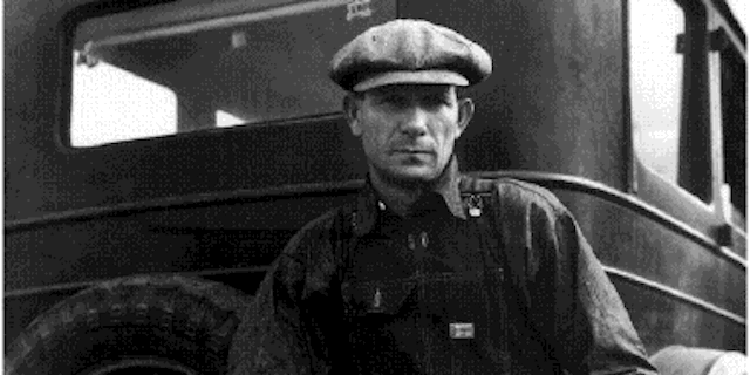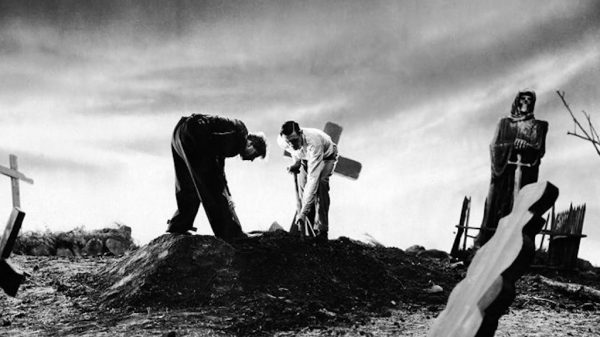Ghost stories have been with us since the beginning of our recorded history. Revenants make appearances in everything from Homer’s Odyssey to the Old Testament’s invocation of ghosts by the Witch of Endor. Examples of ancestor worship are evidence of the belief and efficacy of ghosts in early human history. They are part and parcel of the primal human experience. 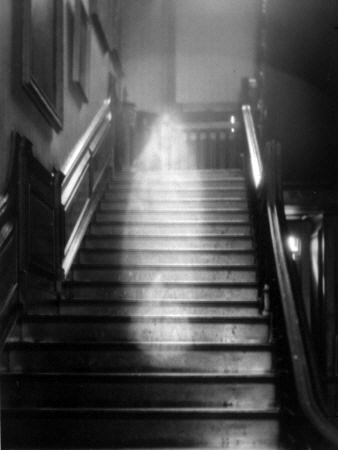 Even today, no campfire seems complete without some iteration of supernatural horror, regardless of how rational or materialistic the speaker or listeners claim to be. Nearly every ghost story follows a similar structure, as pointed out by writer M.R. James, who expressed five key elements of a good ghost story. The first is that there has to be a pretense of truth. In other words, the story has to be grounded in some verifiable reality, whether it be a person or place. The next feature is that the story should convey “a pleasing terror,” or one that excites the senses and gives one chills, but doesn’t over scare. The third was that there was no gratuitous bloodshed or sex, which seems overly puritan at first glance, but makes sense when you consider that the best ghost stories are the ones that our imagination meets halfway. The fourth was that there was no explanation of the “machinery” involved; in other words, much like the admonition against gratuitous sex and violence, there should remain an air of mystery throughout the story that is not overly explained. The final element is that the setting is somewhat contemporaneous with one’s own day and age. A ghost story from a hundred years ago can still pack a punch, as long as there exists stories of current hauntings attached to it.
Even today, no campfire seems complete without some iteration of supernatural horror, regardless of how rational or materialistic the speaker or listeners claim to be. Nearly every ghost story follows a similar structure, as pointed out by writer M.R. James, who expressed five key elements of a good ghost story. The first is that there has to be a pretense of truth. In other words, the story has to be grounded in some verifiable reality, whether it be a person or place. The next feature is that the story should convey “a pleasing terror,” or one that excites the senses and gives one chills, but doesn’t over scare. The third was that there was no gratuitous bloodshed or sex, which seems overly puritan at first glance, but makes sense when you consider that the best ghost stories are the ones that our imagination meets halfway. The fourth was that there was no explanation of the “machinery” involved; in other words, much like the admonition against gratuitous sex and violence, there should remain an air of mystery throughout the story that is not overly explained. The final element is that the setting is somewhat contemporaneous with one’s own day and age. A ghost story from a hundred years ago can still pack a punch, as long as there exists stories of current hauntings attached to it.
But what about a ghost story that skirts many, if not most of these conventions? What about a story that is a bit more graphic, or that in and of itself no longer seems a threat to the listener? For example, a story in which no current possibility of a haunting exists, but which bespeaks of a terror so horrifying that it still resonates, because it tells us something utterly dreadful about the power of the supernatural. Such is the story of Carl Pruitt.
In 1938 in Pulaski County, Kentucky, a carpenter by the name of Carl Pruitt is said to have returned home from work to find his wife in the arms of another man. In a fit of rage, Pruitt is alleged to have strangled his wife to death while her paramour exited through the bedroom window. Seeing what he had done, and presumably feeling regret, terror and sorrow, Pruitt leveled a pistol against his head and blew his brains out.

Rather than be laid to rest next to his wife, Pruitt was placed in a cemetery far from that of his wife’s due to the protests of her enraged family. Alone and forsaken, even in death, Pruitt’s ghost took the form of a wrathful entity. A few weeks after Carl had been placed into the Earth, visitors to the graveyard began to notice a discoloration on his gravestone that gradually came to resemble a chain across the grave. This freak occurrence began attracting the curious to Pruitt’s gravesite. Eventually, a group of young boys made a pilgrimage to the grave, undoubtedly spurned on by an adolescent interest in the macabre. One of the boys, in an attempt to prove to the others that he wasn’t scared, threw a rock at the grave, causing a piece of it to chip off. The boy, whose name was James Collins, left the graveyard with his friends on his bicycle soon after. On his way home, he had a freak accident that ended with Collins expiring as a result of his bicycle chain becoming wrapped around his neck and strangling him to death.
News soon spread of the accident and it’s possible cause being that of the ghost of Carl Pruitt. Upon burying her child, Collins’ mother set out to the graveyard with an axe and a mind for revenge. Once there, she smashed Pruitt’s grave into pieces after hacking at it with all the fury of a grieving tormented mother. The next day, while she was hanging laundry on a clothesline, Collins’ mother slipped and fell, entangling herself in the wires. As she struggled to break free, the clothesline tightened around her neck, eventually strangling her to death as well. Reportedly, despite both her and James’ desecration of the stone, their appeared no signs of destruction at Pruitt’s gravesite. Instead, his gravestone remained wholly intact.
The next victim to suffer Pruitt’s wrath was a farmer who, while riding by the graveyard with his family in a horse drawn carriage, decided to prove his courage by challenging the ghost. Claiming he had no fear of ghosts, the farmer took a revolver and shot several bullets at the gravestone, chipping off pieces once again. As a result, the horses bolted and ran out of control, causing the carriage to crash. Fortunately, none of the farmer’s family was hurt as a result of his foolishness, but the farmer himself was not so lucky; he become entangled in the horse’s reins, which, you guessed it, strangled him to death. Naturally, Pruitt’s grave was restored once again, with nary a sign of damage from the farmer’s gunshots.
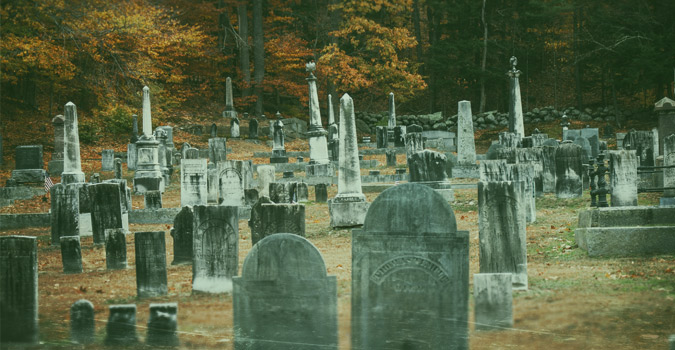
At this point, fear of the curse reached a fever pitch, and the local townsfolk demanded an investigation. A local congressman was contacted and he dispatched two police officers to the gravesite to look into the matter. The police arrived at the grave and began to look for evidence, and took numerous photographs of the site. While there, one of the officers began to laugh and joke about the ghost and his supposed curse. While leaving the graveyard, the officer who had joked about Pruitt’s ghost noticed a light in the rearview mirror of the police cruiser coming from the direction of Pruitt’s grave. He initially assumed it was just a reflection, but as he drove further away, the light grew closer. Beginning to become frightened that maybe there was something to the curse after all, he sped up. The light continued to pursue the police car no matter how fast the officer went. His partner pleaded with him to slow down, but the officer sped up and lost control of the car, crashing it between two posts linked together by a chain. The car flipped repeatedly, throwing the officer’s partner from the car relatively unharmed. Once he was able to come to his senses, the partner went to the wreckage only to find the previously skeptical officer nearly decapitated by the chain that had been hanging between the two posts. It appeared that Pruitt’s ghost had struck once again.
Following the police officer’s death, no one dared go to the graveyard, least they offend the ghost of Carl Pruitt. One man, though, did. His name was Arthur Lewis, and like those before him, he was determined to prove that the legend of Carl Pruitt’s ghost was nothing but superstitious nonsense. Setting out one night with a hammer and a chisel, Lewis went to work in destroying Pruitt’s gravestone. Those who lived near the cemetery could hear the hammering until it abruptly stopped and was replaced by the bloodcurdling screams. Some of the nearby residents set out with lanterns toward the graveyard to see what had occurred. Once they arrived they were met with the gruesome sight of Lewis, dead, with the chain that had been used to close the cemetery gate wrapped around his neck. An inspection of Pruitt’s grave revealed that despite the blows of Lewis’s hammer, the stone was once again unscathed.
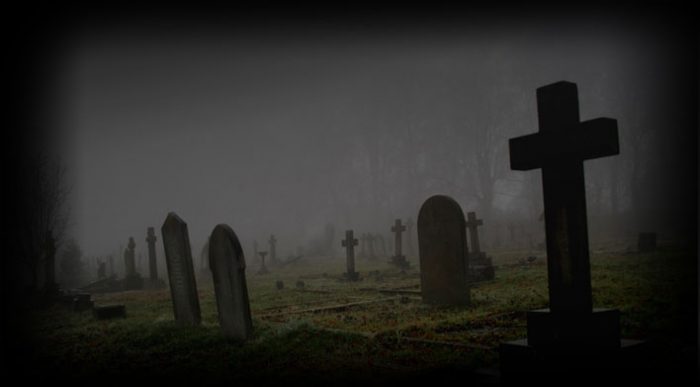
After this death, members of the community who had family members laid to rest in the cemetery had their remains moved elsewhere, so that all that remained was the grave of Carl Pruitt. Since no one dared go near the grave, eventually the Earth reclaimed what was rightfully Hers and the site was all but forgotten. In 1958, it was destroyed once and for all when a strip-mining operation decimated the grave and the land around it. Thus ending the curse of the ghost of Carl Pruitt – or so the story goes.
The Pruitt story is one of the most detailed and fantastical ghost stories that exists. While certainly there is a long history of vengeful ghosts, they are often the exception, and not the norm. Even among ghost stories they are a rarity. The power of most ghost stories lies in the fact that the mere existence of a ghost scares the living as evidence of the unknown. Those chills a listener feels hearing a normal ghost story turn into outright existential terror when the possibility of a murderous supernatural entity is introduced. How does one even begin to combat a disembodied homicidal maniac? For certain, one’s doom is assured when encountering such an entity. We see that made clear in the story of Carl Pruitt. Once his ghost became angered, there was no escape from his deadly revenge. Even if his particular ghost no longer poses a threat, the story itself still has the power to terrify because it is evidence that a ghost can indeed inflict harm from beyond the grave. But all of this, of course, relies on the first tenet of ghost stories: it has to have a pretense of truth.
At first glance, the story of Carl Pruitt’s ghost seems real enough. We have the name of the ghost, the name of two of his victims and the time and place it was alleged to occur, all of which gives it the air of legitimacy. But oddly, it appears, the fatal flaw in the story of Carl Pruitt’s ghost is the fact that it is so detailed and based in reality, a reality that is increasingly easy to verify or falsify. As the old saying goes, if it all appears too good to be true, that’s because it probably is.
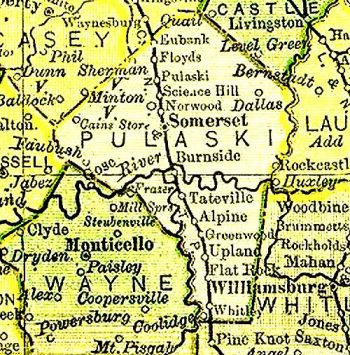 Upon reading of the story of Carl Pruitt’s ghost, I was immediately intrigued because of the amount of verifiable evidence that was purported to exist, which could conceivably back it up. The killings were said to have occurred between the twenty-year period of 1938 and 1958 in Pulaski County, Kentucky. Certainly a murder/suicide would have made the local papers in a region that today is the home of a mere 63,000 people, and was far less in 1938. And if this ghost was striking down residents right and left over that twenty year period, including a kid and a cop, then there should have been no problem in uncovering an article or even a death certificate matching Pruitt’s victims. Sadly, a rather extensive search of the census and death records of Pulaski County did not turn up James Collins, Arthur Lewis, or even Carl Pruitt. The only possible match was an Enos C. Prewitt who died from a self-inflected gunshot wound to the brain at 43 years old on November 7, 1910 around Louisville, Kentucky. It’s certainly possible that this Prewitt was the basis for the Pulaski County Pruitt, and morphed into the character he become to fit local superstitions, which is the fifth common feature of ghost stories, as described by James. As well, there was a farmer by the name of Arthur Lewis who died July 6 of 1914 in Whitley, Kentucky, which is only a couple of counties over from Pulaski County, but it’s unclear from his death record that anything was supernatural about his demise.
Upon reading of the story of Carl Pruitt’s ghost, I was immediately intrigued because of the amount of verifiable evidence that was purported to exist, which could conceivably back it up. The killings were said to have occurred between the twenty-year period of 1938 and 1958 in Pulaski County, Kentucky. Certainly a murder/suicide would have made the local papers in a region that today is the home of a mere 63,000 people, and was far less in 1938. And if this ghost was striking down residents right and left over that twenty year period, including a kid and a cop, then there should have been no problem in uncovering an article or even a death certificate matching Pruitt’s victims. Sadly, a rather extensive search of the census and death records of Pulaski County did not turn up James Collins, Arthur Lewis, or even Carl Pruitt. The only possible match was an Enos C. Prewitt who died from a self-inflected gunshot wound to the brain at 43 years old on November 7, 1910 around Louisville, Kentucky. It’s certainly possible that this Prewitt was the basis for the Pulaski County Pruitt, and morphed into the character he become to fit local superstitions, which is the fifth common feature of ghost stories, as described by James. As well, there was a farmer by the name of Arthur Lewis who died July 6 of 1914 in Whitley, Kentucky, which is only a couple of counties over from Pulaski County, but it’s unclear from his death record that anything was supernatural about his demise.
Finding no real evidence of the existence of any of the individuals in the tale of Carl Pruitt’s ghost, I contacted the Pulaski Historical Society, who despite their interest and attempts to help in the matter, had never even heard of the supposed local legend. They directed me to Dora Whitaker who runs a website that collects and archives the history of the area, particularly murders. Ms. Whitaker had never heard of the legend of Carl Pruitt’s ghost either, which was particularly troubling given that no one who lived in or around Pulaski County – and whose work it was to know it’s local history and legends – had ever heard of the murderous ghost that supposedly had caused a congressman to launch an investigation that ended with the near decapitation of a police officer.

So where did the story of Carl Pruitt come from? If you look online, you will find his story repeated in a similar fashion across many websites. There is even a picture that is alleged to be Pruitt that accompanies most of these stories. The earliest written account I could find was from Troy Taylor’s book Beyond the Grave, published in 2000. I’ve contacted Mr. Taylor about the origin of this story, and he has promised to follow up with me about the origins of the Carl Pruitt story, but as of the publishing date he has not sent me any further information about his sources. What troubles me the most about this story, though, and why I have written about it, is because like Fox Mulder, I want to believe. Certainly, a story like this with so many names, dates and easy to investigate locations could have been a jackpot for a paranormal enthusiast as evidence of proof of the supernatural – instead, it’s the opposite. Maybe ghost stories aren’t meant to be anything more than the mere whisper of the unknown, and maybe that’s because ghosts themselves are simply the mere whisper of the unknown. Maybe this is why a good ghost story shouldn’t disregard James’ five key elements. Regardless, at the end of my search for Carl Pruitt’s ghost, I am left like Mulder – knowing in my gut that there is a world beyond this veil, but having nothing to show for it.

